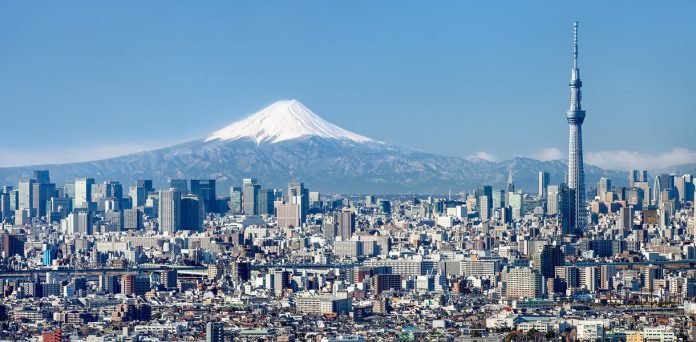In response to an increase in the amount of extreme precipitation caused by climate change, Tokyo modernizes its underground tunnel system for rainwater collection. This ambitious project, which costs $ 1.63 billion, aims to prevent flooding in a city that is already experiencing frequent storms and heavy rains.
In the north of Tokyo, a system from an extensive network of tunnels was built with the official name "Underground channel of resetting the capital's agglomeration", where rainwater is collected during heavy rains. This prevents the city. But since global warming causes more severe weather conditions, the authorities have to seriously modernize the system.
With increasing temperature, the amount of water vapor in the atmosphere increases, which leads to relatively more rainfall. We expect that in the future with fever will fall out an unprecedented amount of rain
It took 13 years for the construction of tunnels and it cost $ 1.63 billion. According to estimates of the Ministry of Land Resources, since the commissioning in 2006, it has already prevented significant losses from floods.

In addition to its engineering function, the complex is a popular tourist facility and a place to shoot movies. Inside are 59 massive 18-meter columns weighing more than 500 tons each. When the surrounding rivers pour, the water passes after 6.3 km of massive underground tunnels before gathered in the reservoir.
In June, the system worked four times, more than in the last year. During Typhoon Shanshan, she safely pumped water into the Edogawa River and to the sea.
Compared to previous years, there is a tendency to simultaneously fall a large amount of rain. If this complex did not exist, the water level in the main river Nakagava and its tributaries could rise much higher, which would lead to the flooding of houses and even the death of people
However, the system could not stop the flooding of more than 4,000 houses in the river basin as a result of strong typhoons in June 2023. These floods prompted the authorities to start a seven -year project worth 37.3 billion yen to strengthen dams and drainage in the area.
And closer to the center of Tokyo is implementing another large project for the connection of channels, which accept water transfusions from the rivers Sirako and Kanda. After completion in 2027, it will take flood waters to a depth of about 13 km underground to the Tokyo Gulf.
The Tokyo sewer network is designed to cope with precipitation up to 75 mm per hour, but local storms are increasingly occurring when the rainfall reaches 100 mm, which overloads the system, says Otomo, the head of the project construction site.
In September, record precipitation caused floods and landslides in Japan's prefecture. 6 people were killed, 10 disappeared, more than 40,000 evacuated, and the region is still being restored after the January earthquake.


